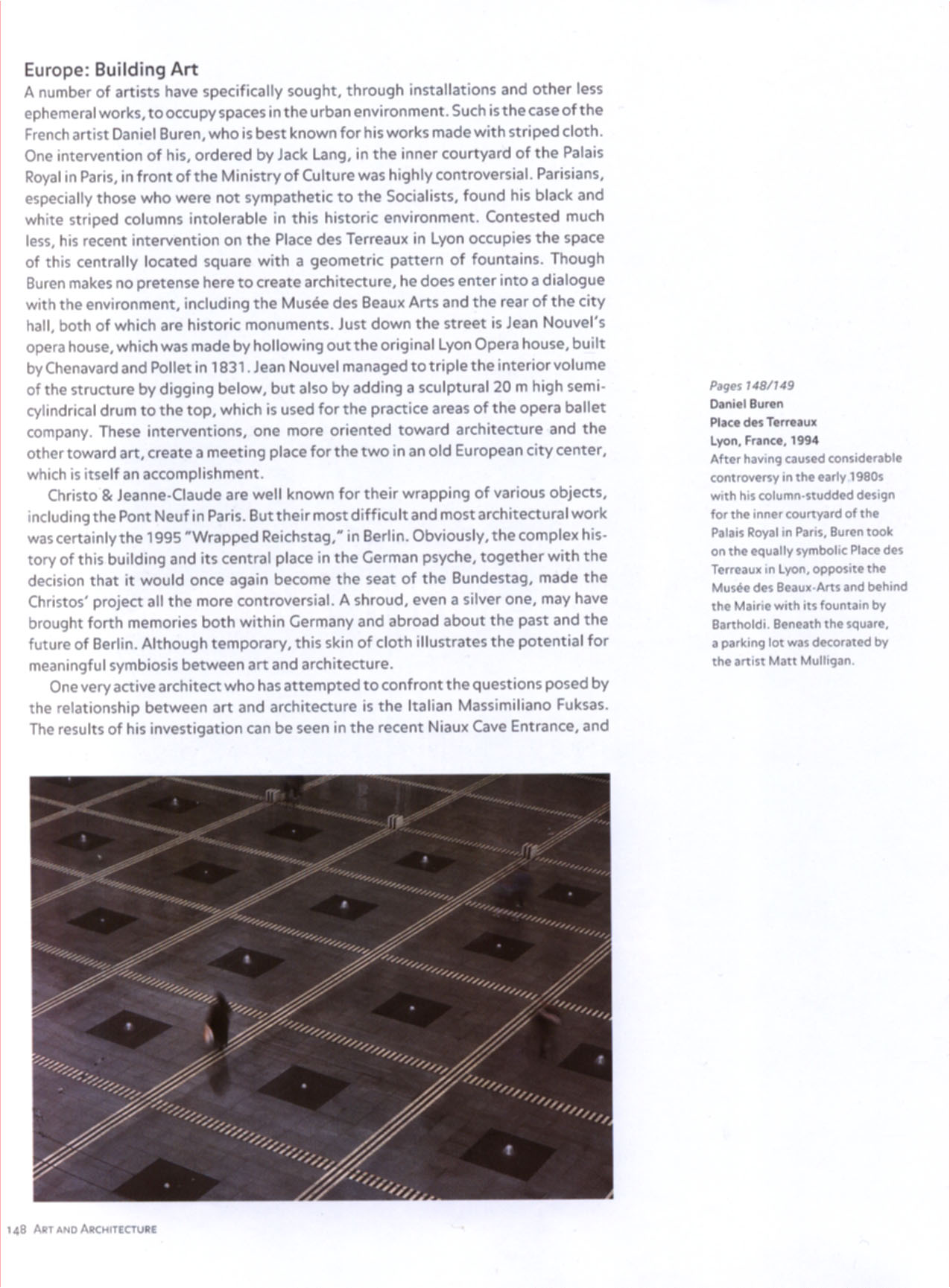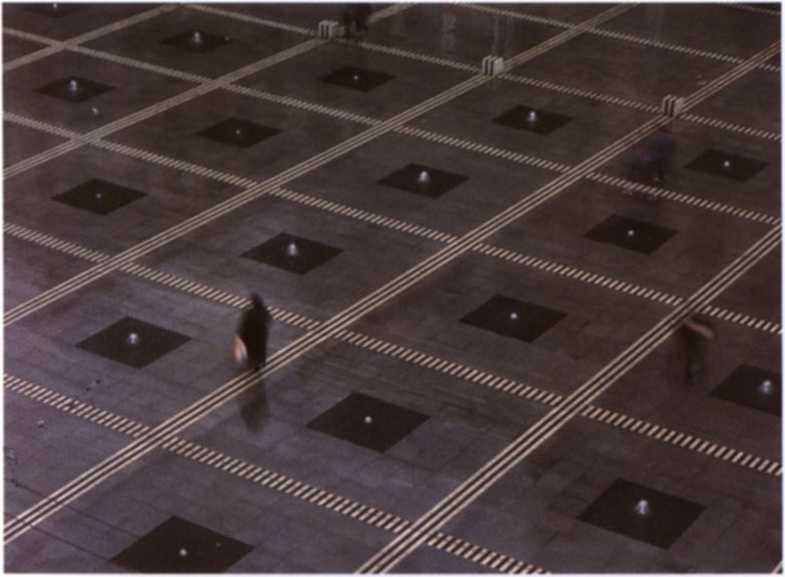New Forms Taschen 138

Europę: Building Art
A number of artists have specifically sought, through installations and other less ephemeral works, to occupy spaces in the urban environment. Such is the case of the French artist Daniel Buren, who is best known for his works madę with striped cloth. One intervention of his, ordered by Jack Lang, in the inner courtyard of the Palais Royal in Paris, in front of the Ministry of Culture was highly controversial. Parisians, especially those who were not sympathetic to the Socialists, found his black and white striped columns intolerable in this historie environment. Contested much less, his recent intervention on the Place des Terreaux in Lyon occupies the space of this centrally located square with a geometrie pattern of fountains. Though Buren makes no pretense here to create architecture, he does enter into a dialogue with the environment, including the Musee des Beaux Arts and the rear of the city hall, both of which are historie monuments. Just down the Street is Jean Nouvel's opera house, which was madę by hollowing out the original Lyon Opera house, built by Chenavard and Pollet in 1831. Jean Nouvel managed to triple the interior volume of the structure by digging below, but also by adding a sculptural 20 m high semi-cylindrical drum to the top, which is used for the practice areas of the opera ballet company. These interventions, one morę oriented toward architecture and the other toward art, create a meeting place for the two in an old European city center, which is itself an accomplishment.
Christo & Jeanne-Claude are well known for their wrapping of various objects, including the Pont Neuf in Paris. But their most diff icult and most architectural work was certainly the 1995 "Wrapped Reichstag,' in Berlin. Obviously, the complex his-tory of this building and its central place in the German psyche, together with the decision that it would once again become the seat of the Bundestag, madę the Christos' project all the morę controversial. A shroud, even a silver one, may have brought forth memories both within Germany and abroad about the past and the futurę of Berlin. Although temporary, this skin of cloth illustrates the potential for meaningful symbiosis between art and architecture.
One very active architect who has attempted to confront the questions posed by the relationship between art and architecture is the Italian Massimiliano Fuksas. The results of his investigation can be seen in the recent Niaux Cave Entrance, and
Paęes148/149 Daniel Buren Place des Terreau*
Lyon. France, 1994 After havmg causcd considerable controversy in the early 1980$ with his columnstudded design for the inner courtyard of the Palais Royal in Paris. Buren took on the equally symbolic Place des Terreaux m Lyon, opposite the Musće des Beaux-Arts and behind the Maine with its fountain by Bartholdi. Bcneath the square, a parking lot was decorated by the artist Matt Mulligan.

148 Art ano Architecture
Wyszukiwarka
Podobne podstrony:
New Forms Taschen 091 Fumihiko Maki National Museum of Modern Art Kyoto. Japan, 1983-86 Fumihik
New Forms Taschen 125 Arata Isozaki Art Towar Mito Mito. Japan, 1986-90 A cultural center indud
19202 New Forms Taschen 206 exist that are capable of changing from high insulation to Iow, from opa
23706 New Forms Taschen 110 Christian de Portzamparc, author of one of the towers in the Euralilie c
30140 New Forms Taschen 224 ni Collea 40 volumes of TASCHEN S WORLD ARCHITECTURE in eight ycars
47870 New Forms Taschen 214 Notes 1 Wigloy, Mark, in: Deconstruc-twist Architectur
New Forms Taschen 008 One of Frank O. Gehry s morę successful buildings is his Vitra Design Museum i
New Forms Taschen 048 Transport, Communications, Tali Buildings and the Urban Nomad Continuing urban
New Forms Taschen 066 $tcven Holi Storcfront for Art and Architecture New York, New York,
więcej podobnych podstron